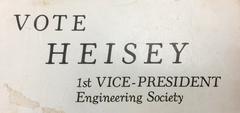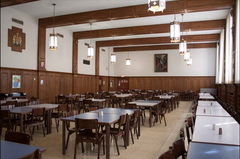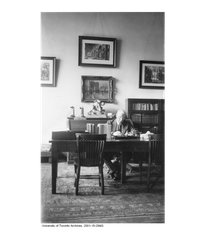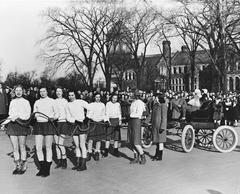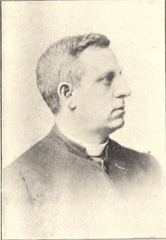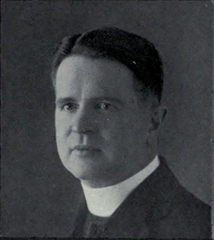
University of Toronto Visiting Hours, Tickets, and Historical Sites Guide
Date: 14/06/2025
Introduction
The University of Toronto, located in the heart of downtown Toronto, is a renowned institution celebrated for its academic excellence, historical significance, and vibrant cultural life. Founded in 1827 as King’s College, it has evolved into one of the world’s leading research universities. The campus is a magnet for students, scholars, history enthusiasts, and travelers eager to explore a unique blend of architectural beauty, verdant green spaces, and a rich legacy of innovation.
This comprehensive guide will help you plan your visit by covering the university’s history, visitor information, travel tips, and nearby attractions. Whether you are considering a guided tour, attending a special event, or simply strolling through its historic grounds, the University of Toronto offers an engaging and enriching experience. For the most up-to-date information, always refer to the University of Toronto official website and related tourism resources (timepath.org; Wikipedia; Toronto2Anywhere; Discover U of T Tours).
Table of Contents
- Introduction
- Historical Overview
- Visitor Information: Hours, Tickets, and Tours
- Navigating the Campus
- Must-See Historical and Architectural Sites
- Green Spaces and Outdoor Attractions
- Museums, Libraries, and Cultural Venues
- Accommodation and Amenities
- Getting to the University of Toronto
- Nearby Toronto Historical Sites and Attractions
- Special Events and Unique Experiences
- FAQs
- Conclusion
- Call to Action
- References
Historical Overview
Founding and Early Development
The University of Toronto began as King’s College, established by royal charter in 1827 to serve the educational needs of Upper Canada. Initiatives led by figures such as John Graves Simcoe, the first Lieutenant-Governor, aimed to create a loyal, educated elite and counter American republican influences (Wikipedia). The college was originally affiliated with the Church of England, a reflection of colonial priorities at the time.
Secularization and Growth
By 1850, growing calls for secular education led to the university’s transformation into a public, non-denominational institution. Renamed the University of Toronto, it became more inclusive and academically independent (timepath.org). The creation of new faculties and the recovery from the 1890 fire that devastated University College demonstrate the university’s resilience and commitment to growth (Wikipedia).
Collegiate System and Federation
The distinctive collegiate system emerged in the late 19th and early 20th centuries, integrating colleges such as Trinity, Victoria, and St. Michael’s, each with unique traditions and architecture (Wikipedia). This model fosters a vibrant academic and social community within the broader university.
Research and Global Impact
The University of Toronto is a global leader in research and innovation, home to numerous breakthroughs, including the discovery of insulin by Sir Frederick Banting and colleagues in the 1920s—a milestone that transformed diabetes treatment (Wikipedia). Its legacy also includes the establishment of Canada’s first academic press and pioneering advancements in AI, medicine, and technology (timepath.org). The university boasts 13 Nobel laureates, 6 Turing Award winners, and a host of distinguished alumni in public life.
Architectural and Cultural Highlights
The St. George campus is renowned for its mix of historic and contemporary architecture. Notable buildings include University College (a National Historic Site), the Gothic Revival Hart House, and the modern Robarts Library. The campus’s green quads, Soldiers’ Tower, and public art make it a cultural and historical landmark (toronto2anywhere.ca).
Visitor Information: Hours, Tickets, and Tours
Visiting Hours
- General Campus Access: Most outdoor areas and major buildings are open daily, typically from 7:00 AM to 11:00 PM. Specific venues such as Hart House and libraries have their own schedules.
- Check Before Visiting: Hours can vary by building and season. Always confirm details on the official visitors page before arriving.
Tickets and Admission
- Campus Entry: Free for all visitors.
- Special Exhibitions/Events: Some museums, exhibitions, and performances may require tickets, available online or at venue entrances.
- Guided Tours: Many tours are complimentary, but some require advance booking and may charge a fee (Discover U of T Tours).
Guided Tours and Events
- Student-Led Walking Tours: Offered year-round, covering history, architecture, and student life. Group tours can be arranged with notice (U of T Mississauga Tours).
- Specialized Tours: Focus on faculties, residences, or particular themes (e.g., architecture, science).
- Virtual Tours: 360-degree tours and digital galleries are available for remote exploration.
Accessibility
- Accessibility Commitment: Most campus buildings are wheelchair accessible, with ramps, elevators, and accessible restrooms (U of T Visitors).
- Mobility and Sensory Support: Services are available upon request; contact Visitor Services in advance for arrangements.
Navigating the Campus
- Size and Layout: The St. George campus spans over 176 acres, making a campus map essential (U of T Visitors).
- Wayfinding: Downloadable maps and mobile route planners are available online.
- Self-Guided Tours: Visitors can explore King’s College Circle, Front and Back Campus, and the main quads at their own pace.
Must-See Historical and Architectural Sites
- University College: Romanesque architecture, completed in 1859, and a National Historic Site.
- Convocation Hall: Iconic domed structure, venue for major ceremonies.
- Hart House: Gothic Revival student centre with art gallery, theatre, and Great Hall.
- Soldiers’ Tower: Memorial tower featuring names of U of T members lost in the World Wars.
- Robarts Library: Striking Brutalist design and North America’s busiest academic library.
Green Spaces and Outdoor Attractions
- Queen’s Park: Adjacent to campus and home to Ontario’s Legislative Assembly.
- University College Quad and Front Campus Fields: Popular for picnics, gatherings, and events.
- Landmark Project: Recent redesigns have made public spaces greener and more accessible (U of T St. George).
Museums, Libraries, and Cultural Venues
- Art Museum at the University of Toronto: Contemporary and historical exhibitions.
- Thomas Fisher Rare Book Library: Canada’s largest rare book collection; access by appointment.
- Hart House: Concerts, public lectures, and art exhibitions open to the public.
- Robarts Library: Extensive collections and public exhibitions.
Accommodation and Amenities
- On-Campus Residences: Summer stays available at New College and Chestnut Residence; amenities include Wi-Fi, breakfast, and city views (New College Summer Residence, Stay at U of T).
- Dining: Multiple cafés, food courts, and restaurants cater to all diets.
- Shops: The U of T Bookstore offers merchandise and souvenirs.
Getting to the University of Toronto
- Public Transit: Served by TTC subway stations—Queen’s Park, St. George, Museum, and Spadina (TourbyTransit).
- Cycling/Walking: The campus is pedestrian- and bike-friendly with ample bike racks.
- Driving: Limited paid parking is available; public transit is recommended due to downtown congestion.
Nearby Toronto Historical Sites and Attractions
- Royal Ontario Museum (ROM): Canada’s most visited museum, adjacent to campus (ROM Official Site).
- Art Gallery of Ontario (AGO): Major art museum nearby (AGO Official Site).
- Yorkville: Upscale shopping and dining district.
- Kensington Market and Chinatown: Vibrant, multicultural neighborhoods within walking distance.
- Queen’s Park: Historic provincial government site and green oasis.
Special Events and Unique Experiences
- Annual Events: Public lectures, art exhibitions, Nuit Blanche, and alumni gatherings.
- Convocation Ceremonies: Witness academic traditions in Convocation Hall.
- Seasonal Festivals: Outdoor concerts and cultural celebrations throughout the year (U of T Events).
FAQs
Q: What are the campus visiting hours?
A: The campus is generally open from 7:00 AM to 11:00 PM, though building hours may vary.
Q: Are tickets required?
A: No general admission fee. Certain exhibitions or events may require a ticket.
Q: How do I book a campus tour?
A: Tours are available online; advance booking is recommended (Discover U of T Tours).
Q: Is the campus accessible?
A: Yes, most areas are wheelchair accessible, and additional support is available upon request.
Q: Where can I stay near campus?
A: On-campus accommodation is offered in summer. Many hotels are nearby.
Q: Are there dining options on campus?
A: Yes, a wide range of cafés, food courts, and restaurants are available.
Q: What public transit serves the campus?
A: TTC subway stations Queen’s Park, St. George, Museum, and Spadina border the campus.
Conclusion
A visit to the University of Toronto offers a unique opportunity to experience a world-class institution immersed in history, culture, and academic achievement. The campus’s central location also provides easy access to Toronto’s premier historical and cultural attractions. With free access to most areas, guided and self-guided tours, accessible facilities, and abundant amenities, your visit is sure to be memorable and rewarding. For the latest details, always consult the University of Toronto official website.
Call to Action
Ready to explore the University of Toronto? Book a guided tour, check upcoming events, and download the Audiala app for interactive maps and audio guides. Stay updated by following U of T on social media and enhance your visit with exclusive insights and resources.
References and External Links
- University of Toronto Official Site
- Timepath: University of Toronto
- Wikipedia: University of Toronto
- Toronto2Anywhere: Things to Do in Toronto in Summer
- Discover U of T Tours
- U of T Strategic Plan 2022-2027
- U of T Magazine: Campus Records and Feats
- Toronto For You: St. George Campus Guide
- TourbyTransit: University of Toronto
- U of T Mississauga Campus Tours
- New College Summer Residence
- Stay at U of T
- U of T Visitors Information
- U of T St. George Campus
- U of T Events
- ROM Official Site
- AGO Official Site
